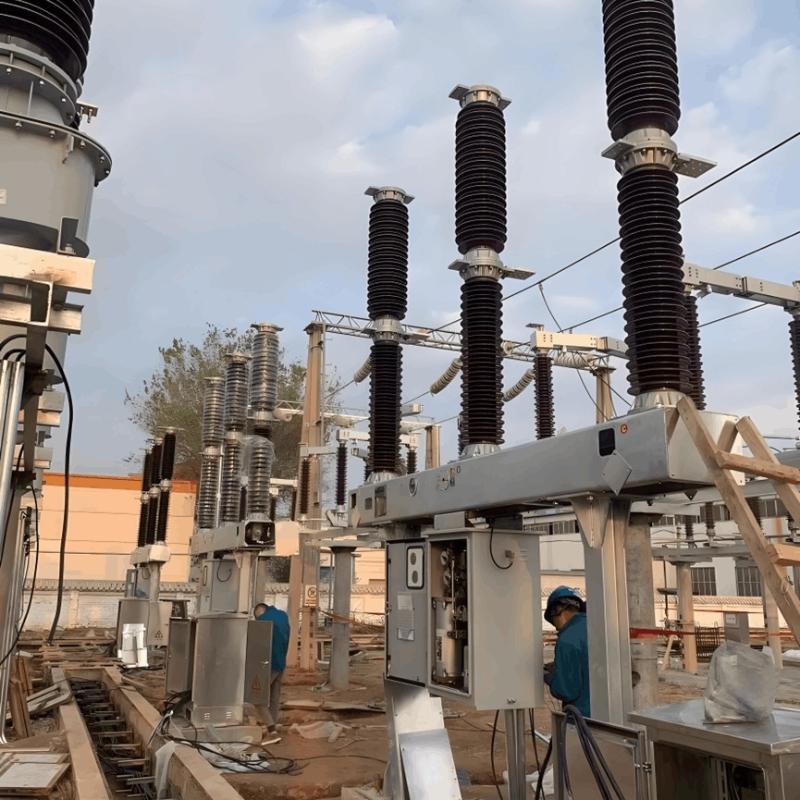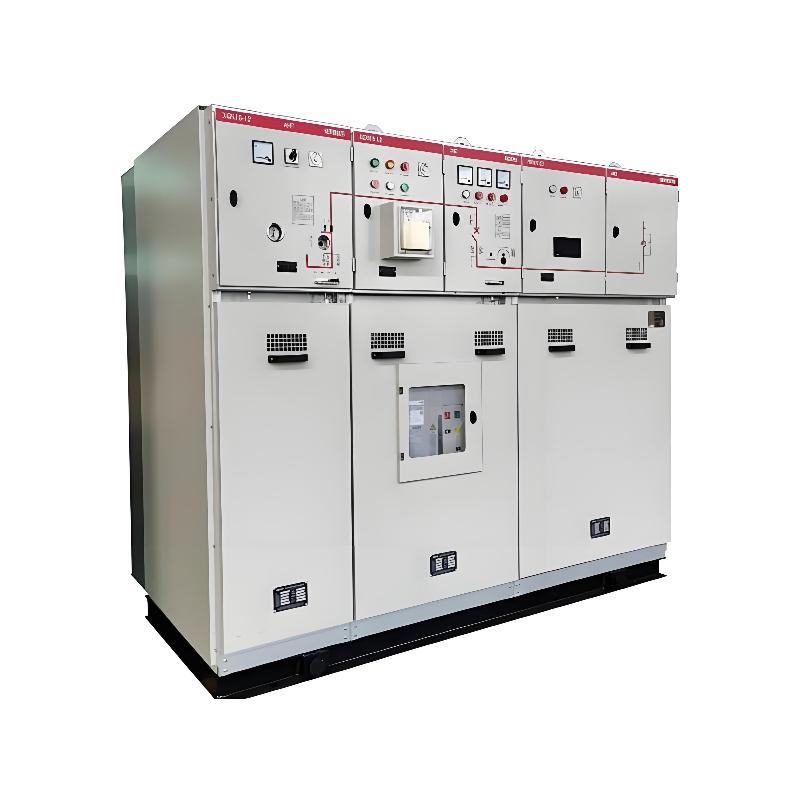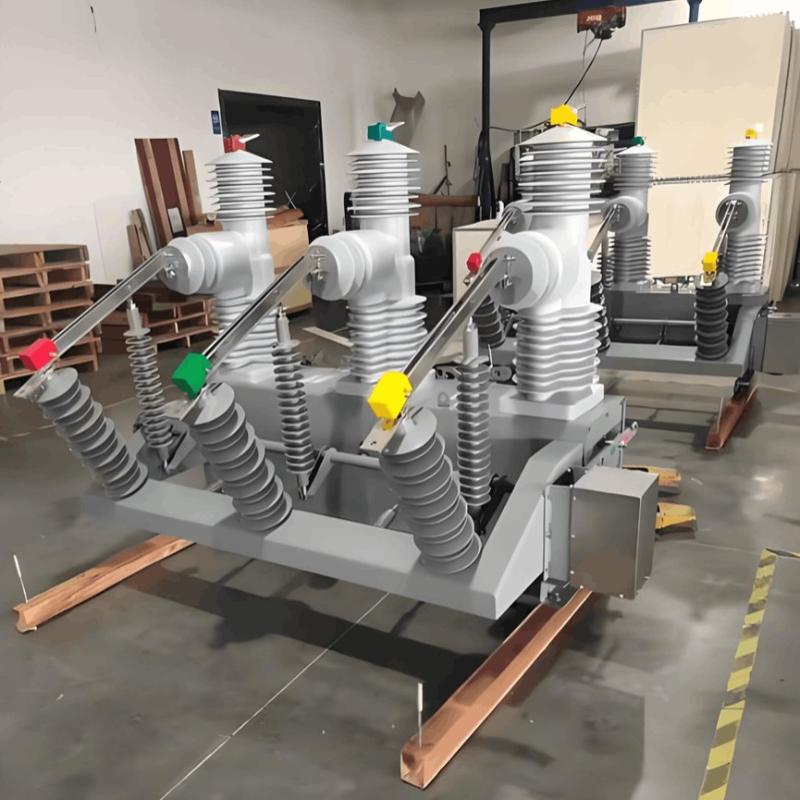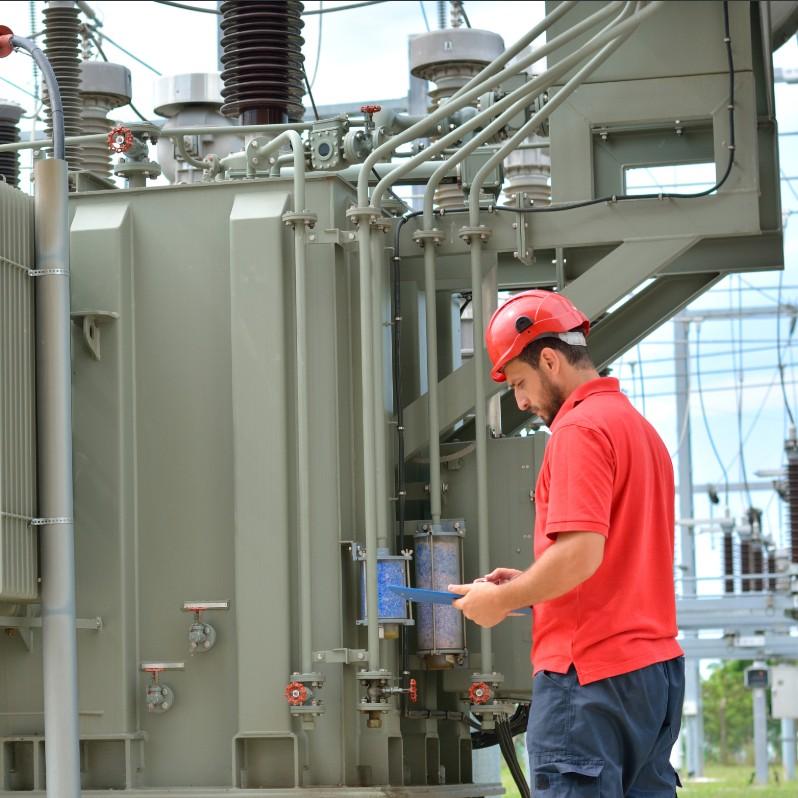1. Mga Sayop sa Pag-install ug Debugging sa Electrical Equipment sa Substation
1.1 Mga Sayop sa Transformer
Sa panahon sa pag-install ug debugging sa electrical equipment sa substation, isip usa ka core device, ang pag-install ug debugging sa transformer mahimong napuimportanteng. Ania ang mga partikular nga problema nga matabangan sa panahon sa pag-install ug debugging sa transformer.
1.1.1 Mga Sayop sa Pag-install
Posisyon ug Paghimo Saad: Ang posisyon sa pag-install sa transformer kinahanglan nimoangay sa design requirements aron masigurado nga stable ug vertical. Ang dili maayo nga posisyon sa pag-install o dili maayo nga paghimo saad mahimong magresulta og vibration o shifting sa transformer sa panahon sa operasyon, na makaapekto sa iyang normal nga operasyon.
Mga Problema sa Wiring: Ang wiring sa transformer kinahanglan gibuhat ngadto sa estricto nga pagsumat sa drawings ug specifications. Ang dili maayo nga wiring mahimong magresulta og safety hazards sama sa short - circuits ug electric leakage. Samtang ang tightness sa wiring kinahanglan maayo ra. Ang dili maayo nga loose mahimong magresulta og dili maayo nga contact, samtang ang dili maayo nga tight mahimong magdugay sa wiring terminals.
Insulation Treatment: Sa panahon sa pag-install sa transformer, importante ang insulation treatment. Ang dili maayo nga pagpili sa insulation materials o non - standard construction mahimong magresulta og decline sa insulation performance, resulta nga magtrigger og electrical failures.
1.1.2 Mga Sayop sa Debugging
Withstand Voltage Test: Human sa pag-install sa transformer, kinahanglan ang withstand voltage test aron matunghaan ang iyang insulation performance. Kon ang resulta sa test wala mosatisfy sa requirements, mahimong nagindikarog kini nga may insulation defects sa sulod sa transformer o damage nagsabot sa panahon sa pag-install.
No - load ug Load Tests: Ang no - load ug load tests mahimong gamiton aron matunghaan kon ang performance parameters sa transformer nimoangay sa design requirements. Ang abnormal nga test data mahimong nagindikarog kini nga may faults sa sulod sa transformer o problems nagsabot sa panahon sa pag-install.
Temperature ug Noise Detection: Sa panahon sa debugging, ang temperature ug noise sa transformer usab kinahanglan mapantayan. Ang excessive temperature o noise mahimong nagindikarog kini nga may problems sama sa poor heat dissipation ug loose iron cores sa transformer.
1.2 Mga Sayop sa Circuit Breaker
1.2.1 Mga Sayop sa Panahon sa Pag-install
Insufficient Line Inspection: Bago mag-install sa circuit breaker, kinahanglan inspeksyunon ang buong line sa circuit breaker. Ang insufficient inspection mahimong mogawas kung ang signals, operation handles, etc. sa line nimoangay sa requirements, resulta nga magresulta og potential hazards sa circuit breaker human sa pag-install.
Insulation Housing Damage: Sa panahon sa pag-install, kinahanglan siguraduhon nga ang insulation housing sa circuit breaker kompleto. Ang bisan unsa nga minor damage mahimong magresulta og decline sa insulation performance sa circuit breaker, resulta nga magtrigger og safety hazards.
Screw Fixing Issues: Sa panahon sa pag-install sa circuit breaker, kinahanglan igtighten ang four - corner fixing screws. Kon ang screws wala ma tighten o ma tighten too much, mahimong makaapekto sa stability ug performance sa circuit breaker.
1.2.2 Mga Sayop sa Panahon sa Debugging
Insulation Rod Faults: Sa panahon sa debugging, kinahanglan detecton ang insulation composition ug resistance sa insulation rod sa circuit breaker [1]. Kon may problema ang insulation rod, sama sa decline sa insulation performance o abnormal resistance values, mahimong direktang makaapekto sa normal nga operasyon sa circuit breaker.
Closing ug Tripping Coil Faults: Sa panahon sa debugging, kinahanglan measureon ang insulation resistance ug DC resistance sa closing ug tripping coils. Kon ang mga parameters wala nimoangay sa requirements, mahimong mapagbansay ang circuit breaker sa pag-close o pag-trip normally.
Abnormal Closing ug Tripping Times: Ang closing ug tripping times sa circuit breaker importante nga indicators sa panahon sa debugging. Kon ang closing ug tripping times wala nimoangay sa design requirements, mahimong makaapekto sa protection performance sa circuit breaker.
Excessive Contact Bounce Time: Sa panahon sa debugging, kinahanglan measureon ang bounce time sa contacts human sa circuit breaker magclose. Ang excessive bounce time mahimong magresulta og increased contact wear, resulta nga makaapekto sa service life sa circuit breaker.
1.3 Mga Sayop sa Disconnector
1.3.1 Mga Sayop sa Panahon sa Pag-install
Porcelain Insulator Fracture: Kini mahimong related sa product quality, overall quality sa disconnector, ug operation method. Tumong, sa panahon sa firing process sa porcelain insulator, mahimong magresulta og problems sama sa under - firing, uneven density, ug poor cement bonding tungod sa improper control. Bisan pa, ang lax quality inspection usahay mahimong magresulta og assembly sa individual low - quality porcelain insulators sa product, resulta nga magcreate og safety hazards sa panahon sa pag-install.
Overheating sa Conductive Circuit: Kini mahimong caused sa fatigue ug deterioration sa compression spring sa static contact finger, unilateral contact sa static contact finger, ug increase sa contact resistance sa panahon sa long - term operation. Bisan pa, ang poor silver - plating process sa contact, easy wear ug copper exposure, dirty contact surface, insufficient insertion sa contact, rusty bolts, etc. mahimong magresulta og heating problems.
Mechanism Problems: Kini mahimong reflected sa operation failures, sama sa refusal to operate o ang switch wala sa lugar. Usual, kini caused sa poor sealing o rust ug water ingress sa mechanism box, resulta nga magresulta og serious rust sa mechanism, dry lubrication, ug increased operation resistance [2].
Difficult Transmission: Kini mahimong due sa rust sa transmission system sa disconnector, resulta nga magresulta og large transmission resistance, making it difficult to open or close the switch.
1.3.2 Mga Sayop sa Panahon sa Debugging
Failure sa Electric Operation: Kini mahimong caused sa problems sa operation power supply circuit, power supply circuit, o reasons sama sa fuse fusing, loosening, ug abnormal electrical interlocking circuits.
Incomplete Closing o Non - Synchronous Three - Phase: Ang mga problema usual caused sa mechanism rust, jamming, ug improper maintenance ug debugging.
Heating sa Contact Part: Sa panahon sa debugging, mahimong makita ang heating sa contact part. Kini usual caused sa reasons sama sa loosening sa compression spring o screws, oxidation sa contact surface leading to an increase in contact resistance, too small contact area between the blade and the static contact, excessive load operation, and arc - burning of the contact during the closing and opening process or improper force resulting in an incorrect contact position.
1.4 Mga Sayop sa Transformer
1.4.1 Mga Sayop sa Panahon sa Pag-install
Internal Winding Short - Circuit: Kini usual caused sa rupture o breakdown sa insulation material between the windings. An internal winding short - circuit will cause the transformer to fail and may even trigger more serious electrical failures.
Terminal Loosening o Poor Contact: When connecting the transformer, terminal loosening o poor contact will lead to unstable output signals and measurement errors.
Housing Electric Leakage: This usually occurs in high - humidity and corrosive environments. Electric leakage will not only lead to measurement errors but also pose a safety hazard.
1.4.2 Mga Sayop sa Panahon sa Debugging
Ratio Deviation: The ratio of the transformer may deviate from the normal value, which will affect the accuracy of measurement. During the debugging process, a current source with known accuracy needs to be used for testing to ensure the accuracy of the ratio.
Core Saturation: Under high - current conditions, the core of the transformer may saturate, resulting in distortion and error of the output voltage. During debugging, it is necessary to check whether the output is linearly related to the input current to avoid the problem of core saturation [3].
Temperature Drift: Temperature changes may cause the performance of the current transformer to drift. Testing the output of the current transformer under different temperature conditions can check for the presence of temperature drift.
External Magnetic Field Interference: The external magnetic field may interfere with the operation of the current transformer. Testing the output of the current transformer under the condition of no external current can observe whether it is affected by the external magnetic field.
1.5 Mga Sayop sa Lightning Arrester
1.5.1 Mga Sayop sa Panahon sa Pag-install
Improper Installation Position: The installation position of the lightning arrester needs to be carried out strictly in accordance with the regulations. An installation position that is too low or too high may affect its lightning protection effect. In addition, installing the lightning arrester in a place vulnerable to mechanical damage, serious pollution, or chemical corrosion may also lead to a decline in its performance or damage.
Connection Problems: Poor contact or loosening of the connection wires of the lightning arrester will prevent it from working properly. For example, a too - small cross - sectional area of the connection wires, insecure connection, or corrosion may all lead to failures.
Grounding Problems: The grounding of the lightning arrester is an important part of its normal operation. An excessive grounding resistance or a broken grounding wire will seriously affect the effect of the lightning arrester. The connection diagram of the lightning arrester is shown in Figure 1.

Excessive Leakage Current: If the leakage current of the lightning arrester exceeds the specified value during debugging, it may be caused by reasons such as internal moisture, insulation aging, or damage of the lightning arrester. In such cases, timely maintenance or replacement is required.
Excessive Residual Voltage: After the lightning arrester operates, it should be able to quickly reduce the voltage to a safe level. If excessive residual voltage is detected during debugging, it may be due to the damage or aging of internal components of the lightning arrester. This also calls for maintenance or replacement.
Insensitive Operation: During the debugging process, if the lightning arrester is found to be insensitive or fails to operate, it may be caused by internal mechanical failures, poor electrical connections, or aging [4]. In this situation, a detailed inspection and repair of the lightning arrester are necessary.
2. Fault Handling in the Installation and Debugging of Substation Electrical Equipment
2.1 Principles of Fault Handling in the Installation and Debugging of Substation Electrical Equipment
Safety - First Principle: When dealing with faults, the safety of personnel is the top priority. It is essential to strictly abide by safety operation procedures to avoid casualties or further accidents.
Rapid Response Principle: Once a fault occurs, the staff should respond promptly and handle it in a timely manner. Do not underestimate the fault due to its small - scale or inconspicuous symptoms to ensure the problem is resolved in a timely manner.
Inspection - Before - Treatment Principle: Before handling a fault, a comprehensive inspection should be carried out first to identify the specific location and cause of the fault, so as to deal with it in a targeted manner and avoid misjudgment or delay in repair time.
Combination of Repair and Prevention Principle: While handling the fault, experience should be summarized, the root cause of the fault should be identified, and corresponding preventive measures should be taken to avoid the recurrence of similar faults.
2.2 Procedures for Fault Handling in the Installation and Debugging of Substation Electrical Equipment
Rapid Response Principle: Once a fault occurs, the staff should respond promptly and handle it in a timely manner. Do not underestimate the fault due to its small - scale or inconspicuous symptoms to ensure the problem is resolved in a timely manner.
Inspection - Before - Treatment Principle: Before handling a fault, a comprehensive inspection should be carried out first to identify the specific location and cause of the fault, so as to deal with it in a targeted manner and avoid misjudgment or delay in repair time.
Combination of Repair and Prevention Principle: While handling the fault, experience should be summarized, the root cause of the fault should be identified, and corresponding preventive measures should be taken to avoid the recurrence of similar faults.
3. Case Analysis of Faults in the Installation and Debugging of Substation Electrical Equipment
3.1 Common Faults in the Installation and Debugging of Substation Electrical Equipment
3.2 Typical Faults in the Installation and Debugging of Substation Electrical Equipment
Transformer Faults
Overheating: It may be caused by a cooling system failure or overload. It is necessary to check the cooling system and load conditions of the transformer.
Abnormal Noise: Usually, it is caused by impurities inside the transformer or structural looseness. Cleaning and tightening treatments should be carried out.
Oil Leakage: It may be caused by the aging or damage of the sealing parts of the insulating oil. It is necessary to check and replace the sealing parts.
Switchgear Faults
Poor Contact: It may be caused by loose wiring or contamination of metal contacts. Cleaning and tightening treatments should be carried out.
Tripping: It may be caused by improper settings of overload protection devices or equipment failures. It is necessary to check the protection parameters and equipment status.
Transmission Line Faults
Insulation Damage: It may be caused by equipment defects, insulation aging, or environmental humidity. Insulation detection and replacement of damaged components should be carried out.
Electric Leakage: It may be caused by line damage or poor contact. Partial discharge testing and insulation treatment should be carried out.
Protection Device Faults: Protection devices may experience misoperation or refusal to operate. It is necessary to check the wiring, power supply, and setting parameters of the protection devices.
Grounding Faults: Problems such as excessive grounding resistance or damaged grounding wires may lead to grounding faults. It is necessary to check the grounding system and grounding resistance.
Other Faults: Problems with distribution boxes (such as grounding wire problems, non - standard box openings, etc.), improper equipment grounding, and equipment conductor connection problems need to be inspected and repaired according to specific conditions.
3.3 Special Faults in the Installation and Debugging of Substation Electrical Equipment
Overload Faults: Overload faults are usually caused by excessive load or equipment damage. Such faults are relatively common in substation electrical equipment and are likely to cause equipment overheating and burnout, seriously affecting the normal operation of the power grid system. When dealing with such faults, the first step is to adjust the system load distribution to avoid equipment overload, and then check for any equipment damage and carry out timely repair or replacement.
Short - Circuit Faults: Short - circuit faults are relatively serious faults in substation electrical equipment. They may be caused by poor internal circuit connections of equipment or damage to the grounding wires of external equipment. Short - circuit faults are likely to cause equipment damage, fires, and other dangerous situations, severely affecting the normal operation of the power grid system. When dealing with such faults, the power supply should be quickly cut off, the cause of the short - circuit should be checked, and repairs should be carried out.
Grounding Faults: Grounding faults may be caused by excessive grounding resistance, damaged grounding wires, etc. Such faults will affect the normal operation of the equipment and may trigger dangerous situations such as fires. When dealing with such faults, it is necessary to check whether the grounding device is intact and eliminate problems such as poor contact of the grounding resistance to ensure that the grounding resistance meets the requirements.
Insulation Faults: Insulation faults are usually caused by equipment defects, insulation aging, environmental humidity, etc. When insulation faults occur, the equipment often cannot operate normally, and in severe cases, it may cause damage to the staff and equipment. When dealing with such faults, insulation detection and maintenance should be carried out to improve the insulation level of the equipment and prevent the occurrence of insulation faults.
4. Abnormal Phenomena in the Installation and Debugging of Substation Electrical Equipment
Distribution Box Installation Faults: Gaps between the distribution box and the ground may be due to the inability of the grounding wire to meet the specification requirements under repeated operation conditions; non - standard openings of the distribution box body, with too many welding openings, resulting in damage to the protective paint of the box body; limited space in the distribution box, affecting manual operation.
Conductor Quality Problems: The color and quantity of conductors do not meet the requirements, which may easily cause confusion for installers. For example, the neutral wire, live wire, and ground wire have the same color, creating a safety hazard.
Conduit Laying Problems: The conduits are too short or the wires are exposed, and there is an overlapping phenomenon between the distribution box and the concealed pipeline. Construction workers do not properly control the depth of the conduits buried in the wall or ground, resulting in insufficient reserved space, which brings difficulties to wire crossing and threading work.
Improper Insulator Installation: Insulators are not installed in accordance with the specifications, resulting in a decline in the insulation performance of the equipment and possibly triggering discharge faults.
Excessive Grounding Resistance: The measured value of the grounding resistance exceeds the specified standard, which may affect the safe and stable operation of the equipment.
Poor Contact at Busbar Joints: Poor installation of bus






















